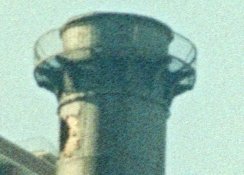fotoobscura
Subscriber
Afternoon.
I archive all my scanned images to TIFF but their file sizes are unwieldy for cloud storage and for casual viewing.
Over the last few years I have been trying to figure out what image size/resolution I should convert TIFFs to for casual (but functional) viewing. By that I mean a size that is still printable at a fair size (say, 16x20in) but not a huge file. PNG's are (typically) for me 90% the size of an LZW compressed TIFF, not much of a savings. A JPEG at 100% quality is roughly one third the size of a PNG. Now that's quite a savings.
The question is- Am I losing quite a lot of detail/color/resolution comparing a 100% quality JPEG and a compressed PNG? If so, is there a method to determine how much that is? Or is this hypothetical? If I'm losing say 10% "quality" on a JPG as opposed to a PNG, I'm willing to take that loss if the file size is three times smaller. Personally I cannot visually perceive any *quality* difference between a 100% JPG and an uncompressed PNG.
In my ultra unscientific study I have attached two images magnified roughly 700%. The first is a jpeg, the second is a png. These come from 2000dpi 35mm scans off of a Nikon LS8000 scanner @ 2000 DPI, compressed TIFF. The latter image (the PNG) has more color noise than the JPEG. I actually prefer the JPEG in this example!
Anyone out there with expertise to field this question?
Thanks in advance!
(all trolling >> dev/null)
I archive all my scanned images to TIFF but their file sizes are unwieldy for cloud storage and for casual viewing.
Over the last few years I have been trying to figure out what image size/resolution I should convert TIFFs to for casual (but functional) viewing. By that I mean a size that is still printable at a fair size (say, 16x20in) but not a huge file. PNG's are (typically) for me 90% the size of an LZW compressed TIFF, not much of a savings. A JPEG at 100% quality is roughly one third the size of a PNG. Now that's quite a savings.
The question is- Am I losing quite a lot of detail/color/resolution comparing a 100% quality JPEG and a compressed PNG? If so, is there a method to determine how much that is? Or is this hypothetical? If I'm losing say 10% "quality" on a JPG as opposed to a PNG, I'm willing to take that loss if the file size is three times smaller. Personally I cannot visually perceive any *quality* difference between a 100% JPG and an uncompressed PNG.
In my ultra unscientific study I have attached two images magnified roughly 700%. The first is a jpeg, the second is a png. These come from 2000dpi 35mm scans off of a Nikon LS8000 scanner @ 2000 DPI, compressed TIFF. The latter image (the PNG) has more color noise than the JPEG. I actually prefer the JPEG in this example!
Anyone out there with expertise to field this question?
Thanks in advance!
(all trolling >> dev/null)







